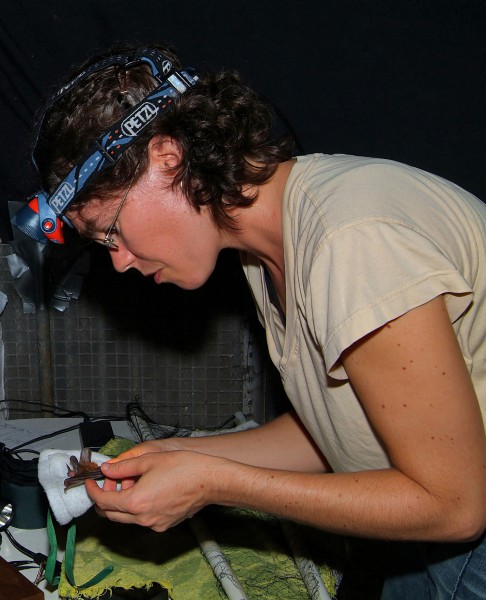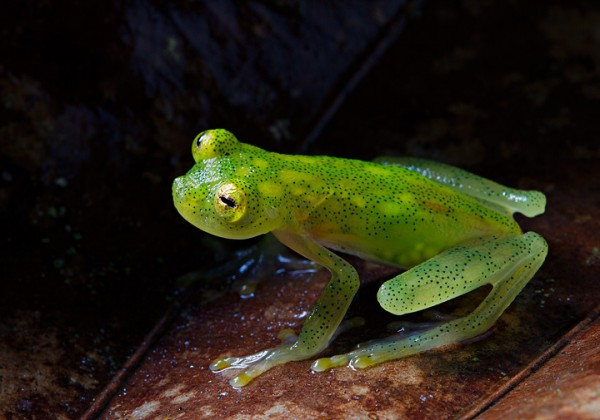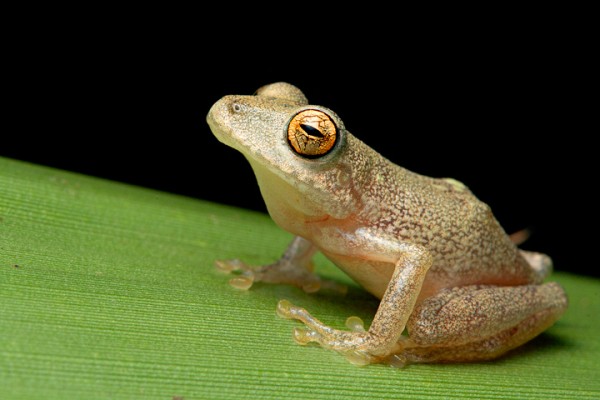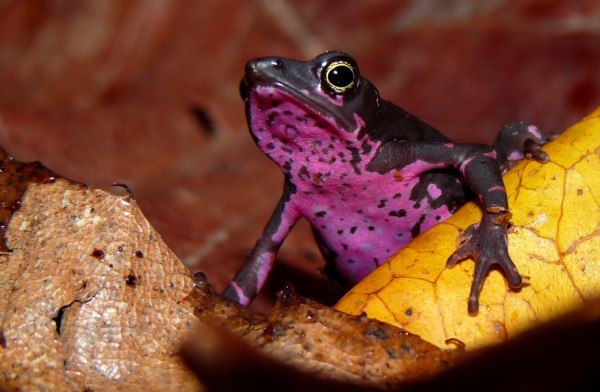
Rachel Page, STRI staff scientist, studies the interaction between frogs and bats. When male frogs call to attract female frogs, they also attract predators, like bats. (Photo courtesy of STRI)
At the Behavioral Discussion Group at the Smithsonian Tropical Research Institute in Panama earlier this month, post-doc Justin Touchon presented a new study of egg-laying behavior in Dendropsophus tree frogs to a standing-room only crowd. Weeks after the rainy season begins, 30 plus species of frogs join the chorus at the edge of Panama’s Soberania National Park, and the Frog People arrive in droves.
“We don’t experience this concentration of frog researchers at any of our other field sites,” said Karen Warkentin, who brought several students with her from Boston University to study parental care and hatching plasticity in glassfrogs.
Mike Ryan from the University of Texas at Austin, Ryan Taylor, Salisbury University and STRI’s Rachel Page received significant funding from the U.S. National Science Foundation to study female responses to male robofrogs. They’ll learn how animals, including humans, integrate information through different sensory channels.
Karen Lips, University of Maryland, continues to monitor amphibian decline in Cope and in Darien Province. Roberto Ibañez and Brian Gratwicke will orchestrate the construction of new facilities in Gamboa for the Panama Amphibian Rescue and Conservation Project. Corinne Richards-Zawacki from Tulane University also has a major NSF grant to study the evolution of Bocas del Toro’s emblematic strawberry poison dart frogs.
–-Provided by Beth King, Smithsonian Tropical Research Institute





